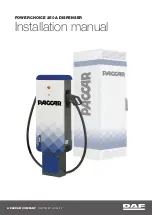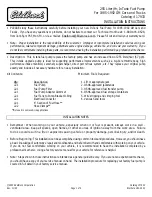
Adjusting
26
Adjusting
Safe seated position
A seated position that suitably reflects your
requirements is a vital condition of relaxed driv-
ing with a minimum of fatigue. In conjunction
with the seat belts, the head restraints and the
airbags, the seated position has a major influ-
ence on your safety in the event of an accident.
You should therefore observe the following
notes in order to maintain the protective func-
tion of the car's safety systems.
For additional notes on child safety, see
page
.
Airbags
Keep your distance from the airbags.
Always grip the steering wheel on the rim,
with your hands in the 3 o'clock and 9 o'clock
positions, to minimise the risk of injury to the
hands or arms in the event of the airbag being
triggered off.
No other persons, pets or objects should be
held or permitted to remain between the airbag
and yourself.
Do not use the front airbag cover on the front
passenger's side as a tray. Make sure that the
front passenger likewise adopts a correct
seated position and does not rest feet or legs on
the instrument panel, otherwise he/she could
sustain leg injuries in the event of the front air-
bag being triggered off.
<
Even if all these instructions are complied with,
certain injuries as a result of contact with the
airbag cannot be entirely ruled out, depending
on the circumstances in which an accident
occurs. Occupants with sensitive hearing may
be subject to brief and generally temporary
impaired hearing caused by the ignition and
inflation noise.
The locations of the airbags and additional
notes are given on page
.
Head restraint
A correctly positioned head restraint reduces
the risk of neck injury in the event of an acci-
dent.
Adjust the head restraint in such a way
that its centre is at approximately ear
level; otherwise, there is a risk of injury should
an accident occur.
<
Seat belt
Before driving off, always make sure that all
occupants have fastened their seat belts. The
airbags are a complementary safety feature and
not a substitute for the seat belts.
Never restrain more than one person with
each seat belt. Babies or small children
must not travel on the lap of another occupant.
Pregnant women should also wear the seat belt,
making sure that the strap in the pelvic area is
well down on the hips and does not press on the
abdominal region of the body.
The seat belt must not pass across the neck,
become trapped at any point or chafe against
any sharp edges. The seat belt should not be
twisted and must be positioned firmly over the
pelvis and shoulder, as close to the body as
possible. It should not pass over hard or fragile
objects, otherwise the belt in the pelvic area
could slide over the hips in the event of a head-
on collision and injure the lower abdomen.
Avoid wearing bulky clothing and regularly pull
the belt in the upper-body area taut, otherwise
its restraining effect could be impaired.
<
Seat belts, see page
.
Seats
Before adjusting, note
Do not reposition the driver's seat while
the car is in motion. The seat could move
unexpectedly, leading to the driver losing con-
trol of the car, so that an accident could be
Online Edition for Part-No. 01 41 0 159 204 - © 03/05 BMW AG
Summary of Contents for 320d xDrive
Page 7: ...Online Edition for Part No 01 41 0 159 204 03 05 BMW AG...
Page 15: ...Online Edition for Part No 01 41 0 159 204 03 05 BMW AG...
Page 85: ...Online Edition for Part No 01 41 0 159 204 03 05 BMW AG...
Page 93: ...Online Edition for Part No 01 41 0 159 204 03 05 BMW AG...
Page 127: ...Online Edition for Part No 01 41 0 159 204 03 05 BMW AG...
Page 143: ...Online Edition for Part No 01 41 0 159 204 03 05 BMW AG...
















































